SLC21/WK5: Choking and Airway Obstruction: A Complete Guide to Life-Saving First Aid Techniques
Designed With Canva.
It is always a joy for me whenever I have the opportunity to participate in the Steemit contest weekly and today I will be participating in the crypto academy community contest. Stay tune below.
Q1: Describe in detail the mechanism of choking. What happens physiologically when the airway is obstructed? List and explain the distinctive features or signs of choking, including how to differentiate between partial and complete obstruction.
Talking about the mechanism of choking, I will say it works in a way whereby choking can happen in a way whereby there is this particular object that might be serving as blockage to the airway which is then affecting the airflow that should be entering the lungs. When this happens, then choking has happened. Most of the time, the obstruction always happens around the upper airway and even also at the lower airway. Sometimes it can be because of food, liquid and even object that we mistaken inhaled.
Physiological Process of Airway Obstruction.
There are some processes that are involved when it comes to airway obstruction which I want us to look into together below;
- Partial Obstruction: This is the First one and in this type of situation, it means there is a reduction in the airflow but that does not mean it is blocked. Most of the time, the person can still breathe but is always difficult at times.
- Complete Obstruction: In this particular obstruction, the air can not even pass through the airway any longer. Most of the time it leads to oxygen deficiency because Oxygen can no longer enter the body and if not quickly attended to, it can lead to death and even brain damage.
Signs of Choking
There are some few signs and symptoms that I believe one can pay attention to when it comes to choking which I will be explaining below;
Difficulty in Breathing
Gasping
Cyanosis
Wheezing
Coughing most times silent coughing.
Grabbing the Throat
Inability to speak
Red or Flushed Face
Loss of Consciousness
Differentiating Partial and Complete Obstruction
| Feature | Partial Obstruction | Complete Obstruction |
|---|---|---|
| Breathing State | Difficulty In Breathing but still breathing little | Unable To Breath |
| Speech Flow | Reduction in the rate of speaking or difficulty in speaking | Unable to speak at all |
| Cough Level | Difficulty in coughing but still been able to cough little by little | Unable To Cough |
| Oxygenation Level | Oxygen Level is low | Absent of oxygen. |
| Consciousness Level | Consciousness Level is still stable | There is loss of Consciousness |
Demonstrate the Heimlich maneuver on a sibling, child, or peer (using safe simulations). Attach pictures of the demonstration and explain the procedure in detail, highlighting key points such as positioning, technique, and safety precautions..
These are step by step process I follow to carry out the simulation.
- Positioning The Person: I make sure that position the person so that I am standing behind the person who is choking. I then make sure that my arms are actually warp around the person waist. Then I make sure that the person leans forward so that there will not be any further obstruction.
- Proper Hand Placement: The next thing I did was to make a proper hand statement by making use of one of my fists and then placing the fist above the person who is choking naval.
- Applying Pressure: Then the next point is for me to gradually apply the pressure because it is quite needed. I make sure that I grasp the person fist with my hand then I begin to carry out upward thrusts.
- Key Points: Then I gradually begin to carry out the key points in such a way that I continually repeat the thrusts so that the person will start to breath or start to even cough.
Consider a situation where you encounter a conscious person choking on food. They are showing signs of cyanosis and restricted breathing. Describe how you will prioritize and manage the situation. Write each step in detail, from identifying choking to performing first aid and ensuring the victim's safety. Include how you would take control of the situation, communicate with bystanders, and seek medical assistance if needed.
If I actually find myself in this situation, there are some basic things that I will do step by step below.
- Identify the Choking: This is the Frist I will do. I will try to make sure that I actually observed the symptoms and the signs for the choking. Then I will try to confirm the issue by asking the person once again if the person is choking.
- Take Control of the Situation: Then the next step is for me to take full control of the situation. The first is to first of all stay calm. I make sure that I calm the person down so that there will not be panic. Then I try to make sure that I position the person if necessary to make the person stand up.
- Engage Bystanders for Assistance: At that particular time, I will understand that I can not do it alone so I will try to engage people who are passing by for assistance so that I can delegate tasks like someone calling the 911, another person might be helping me to clear the area and another person can stand beside me in case of any further assistance.
- Perform First Aid: Heimlich Maneuver: Then I make sure that I perform First aid. I will try to position myself, carry out the hand placement and try to perform the abdominal thrust for the person.
- Reassess and Monitor: Then I move to check the person breathing level and why I will be doing that is to help to make sure that the person breathing is in the normal level. Then I pay attention to any further complications.
- Seek Medical Assistance: If I have been able to calm the person down, that means when I notice that the object causing the choking have removed and the breathing level has come back to normal, I should expect the emergency medical service should have arrived.
- Debrief and Report: Then lastly I try to provide the report so far about that person for the emergency medical service so that they can continue from there.
Create an infographic (visual illustration) on managing choking emergencies.Your design should include key steps, such as how to identify choking, perform back blows, abdominal thrusts, and manage choking in special cases (e.g., infants, pregnant individuals). Ensure your infographic is clear, visually engaging, and easy to understand.
These are the infographics below
1. Identifying Choking.
2. Performing Back Blows
3. Performing Abdominal Thrusts
4. Managing Choking In Special Cases (e.g., infants, pregnant individuals).
Thank you for this lecture, looking forward to more interesting and benefiting lectures in the more weeks to come
I invite @lovelystar , @newekemini5 and @okere-blessing to drop a very constructive comments on this post and also to participate in this contest.
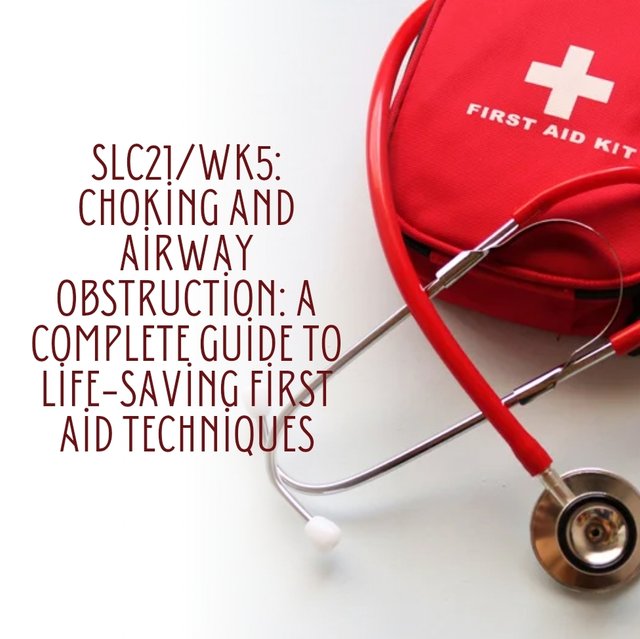



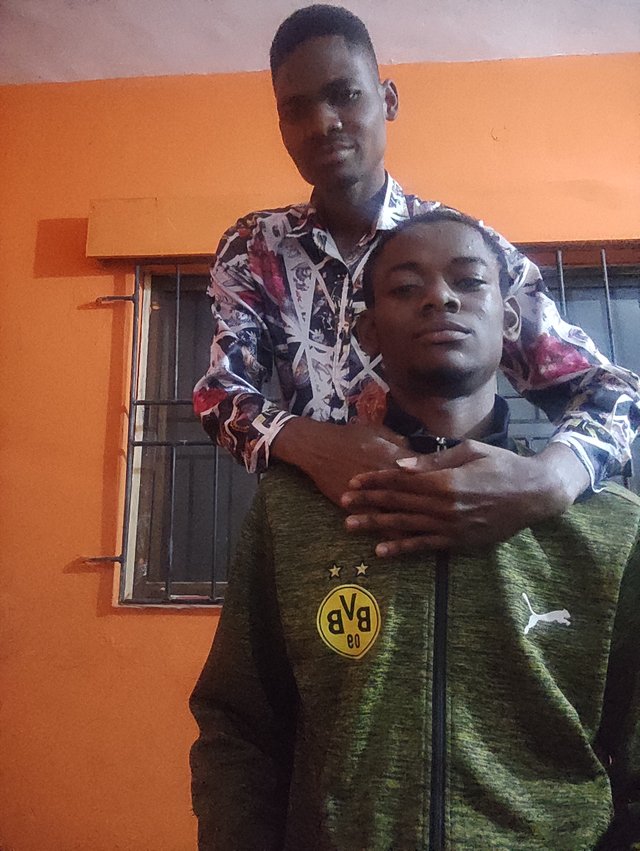
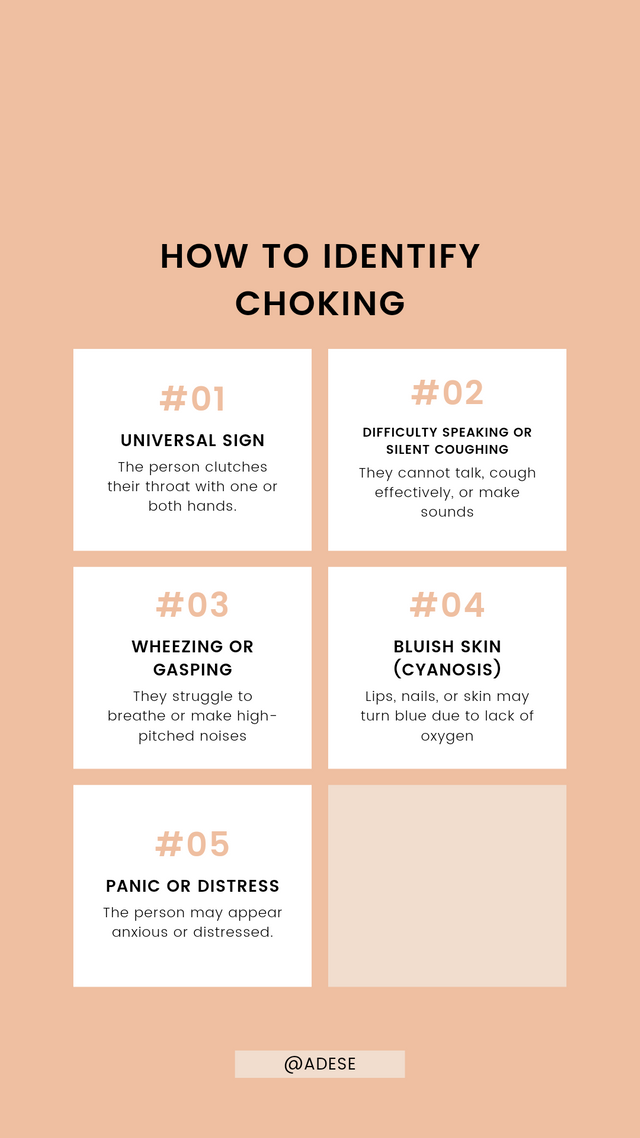
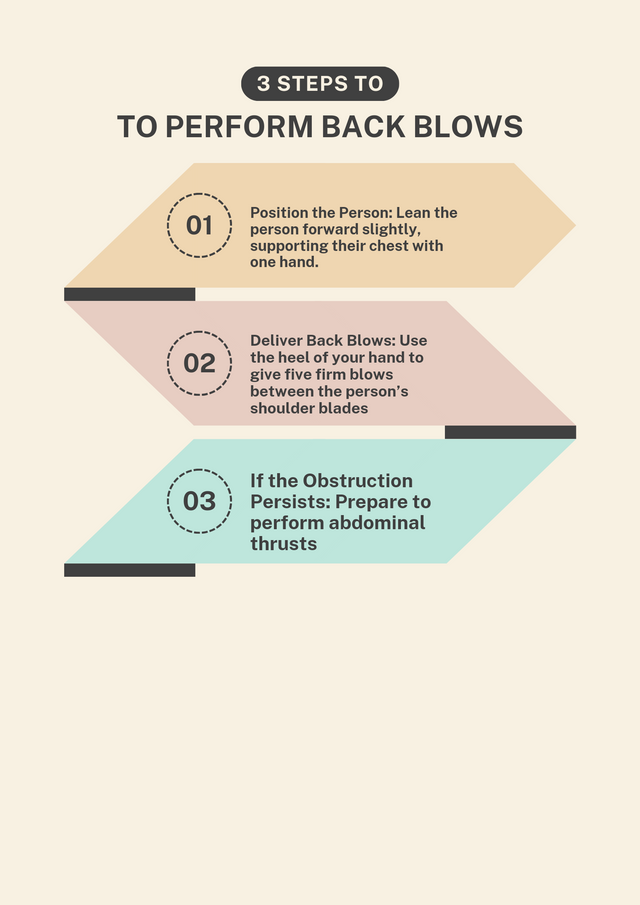
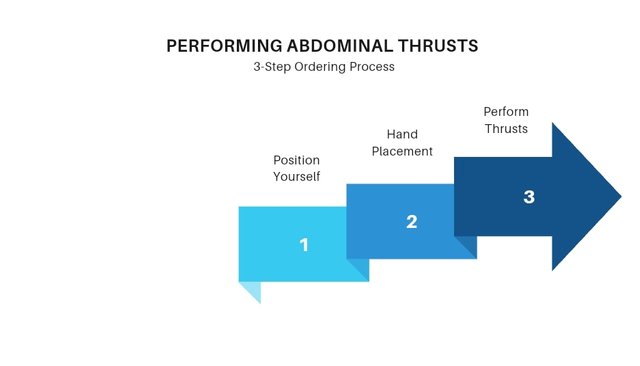
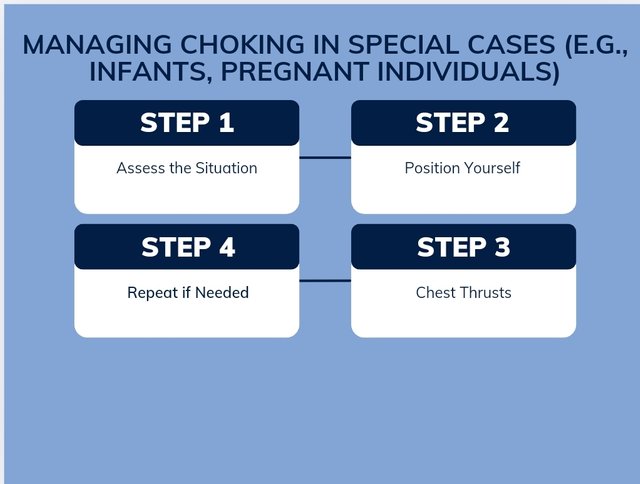
Please remove the #teachingteam tag - that is for applications for the next season of the Learning Challenge.
Oh alright that was a mistake from my side
I have removed it instantly
Student Name: @adese
Overall grade: 7.2
Plagiarism Check: Pass
AI Use: No
General Feedback: The student has shown a good understanding of this week's course.. I enjoyed reading this post but there were a few shortcomings which I'm sure will be avoided in the upcoming posts.
Thank you.
Regards,
@huzaifanaveed1
Thank you so much for this review
I really appreciate
https://x.com/adenijiadeshin7/status/1861855870813868373?t=HGFuvY3eAzBkELJPkIxXUw&s=19
@tipu curate
Upvoted 👌 (Mana: 0/7) Get profit votes with @tipU :)
Hi! It's good to know more about choking, you never know when an accident could happen and this valuable knowledge is very helpful at times like this, the pictures guide on how to handle choking situations are very nice.
Have a nice day!